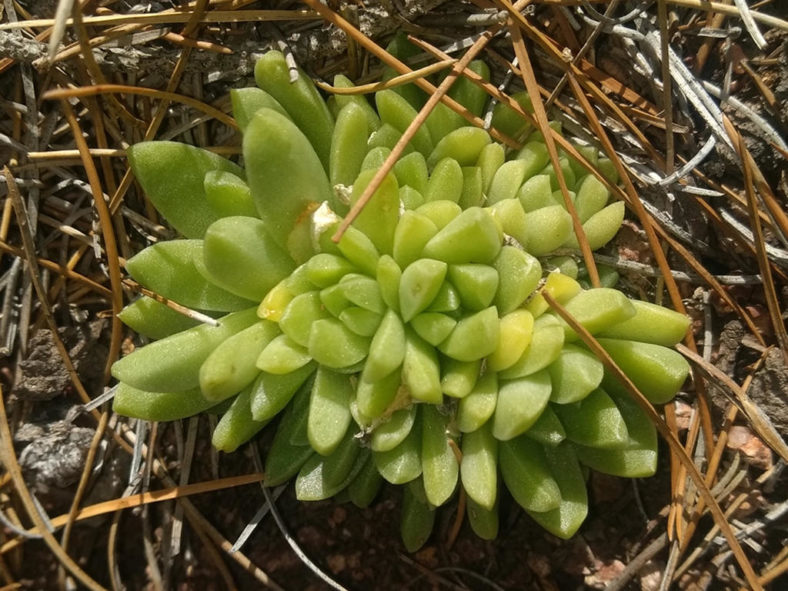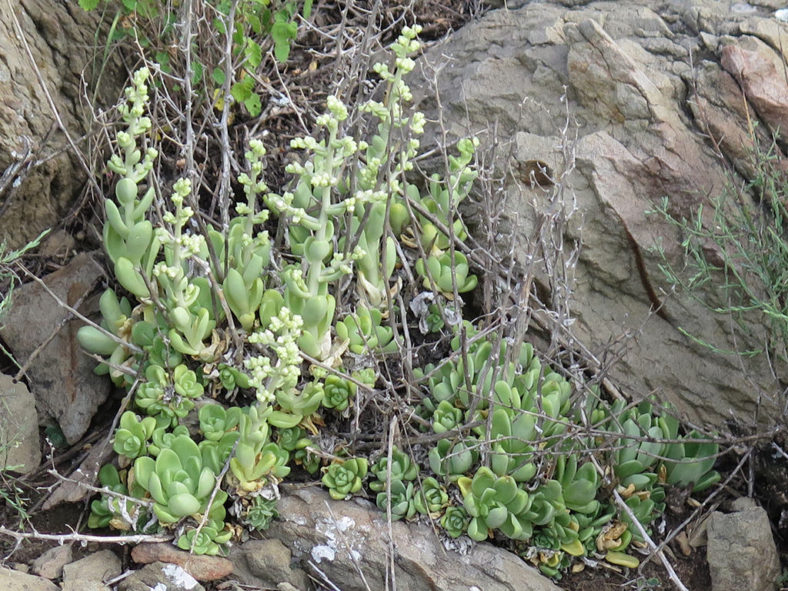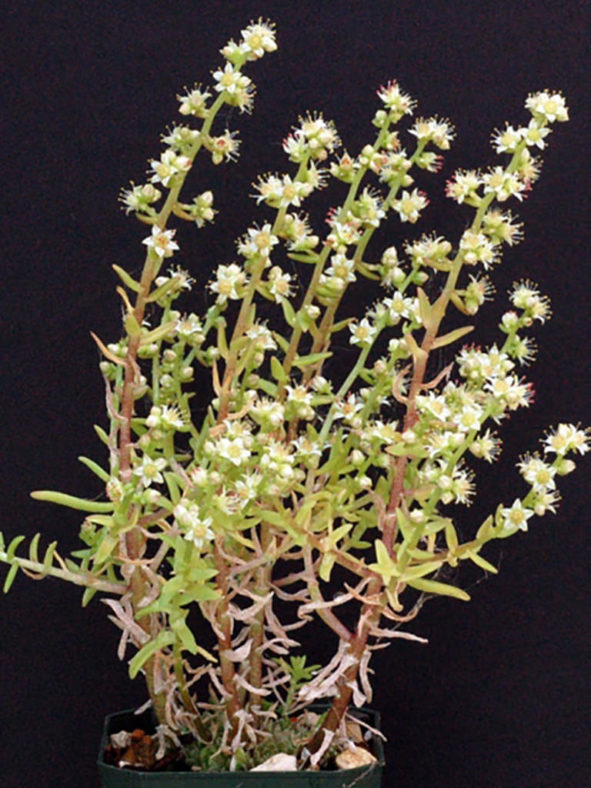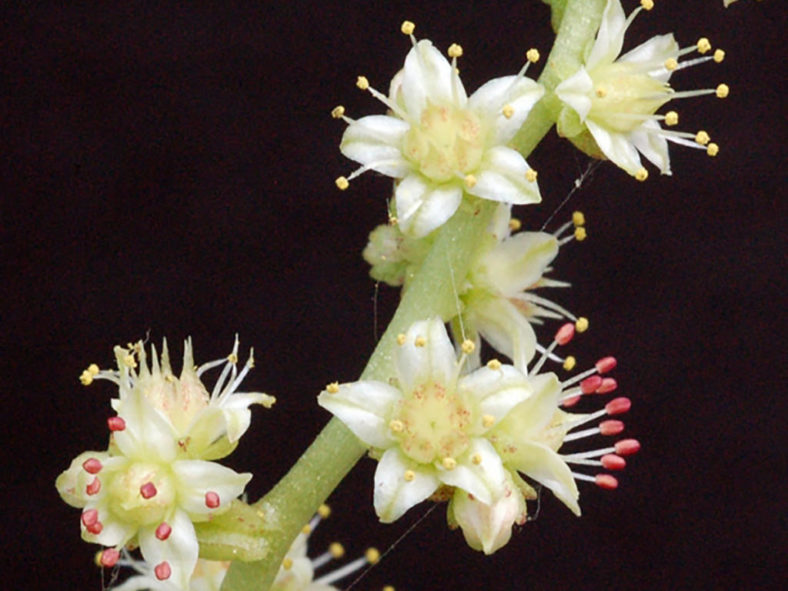Scientific Name
Sedum glabrum (Rose) Praeger
Synonym(s)
Sedastrum glabrum, Sedastrum palmeri, Sedastrum turgidum
Scientific Classification
Family: Crassulaceae
Subfamily: Sempervivoideae
Tribe: Sedeae
Genus: Sedum
Etymology
The specific epithet "glabrum (GLAY-brum)" means "smooth, hairless" and refers to the entirely glabrous leaves of this species.
Origin
Sedum glabrums is native to northeastern Mexico. It occurs on rocks on the dry western side of the northern Sierra Madre Oriental and the adjacent plateau in Coahuila, San Luis Potosi, and western Nuevo Leon. However, the distribution area may be wider because this species is often confused with Sedum ebracteatum.
Description
Sedum glabrum is a small succulent that forms a dense clump of basal rosettes of green, smooth leaves. The leaves are oblanceolate to spatulate–oblong and can measure up to 1.4 inches (5.5 cm) long.
The flowering branches are erect or suberect, rather stout, densely leafy, and can grow up to 10 inches (25 cm) long. The flowers are white, star-shaped, 5-merous, and appear in elongated panicles in fall.

How to Grow and Care for Sedum glabrum
Light: This succulent grows best in locations where it will enjoy the full sun for at least six hours daily. It will tolerate partial shade but will not thrive in deep shade. Keep your indoor plant in a sunny window or under artificial lights.
Soil: S. glabrum does not like to sit in waterlogged soil, so drainage is essential to prevent root rot. Choose a well-draining soil mix.
Temperature: This plant is tolerant of heat and freezing temperatures. S. glabrum can withstand temperatures as low as 25 °F (-3.9 °C). USDA Plant Hardiness Zones 9b to 11b, 25 to 50 °F (-3.9 to 10 °C).
Watering: From spring through fall, water thoroughly and wait for the soil to dry out before watering again. In winter, water your plant just enough to keep it from shriveling. Avoid wetting the leaves, stems, and flowers when watering.
Fertilizing: Feed with a balanced organic fertilizer in spring. Feeding is unnecessary as long as the plant is divided annually and provided with fresh soil.
Repotting: Repot your plant when it outgrows its current pot by moving it out to a larger container to hold the plant better. Spring is the best time to repot S. glabrum. Make sure the soil is dry before you begin repotting.
Propagation: Once you have one S. glabrum, it is easy to make more by taking stem cuttings and dividing the plant. It is also easy to grow from seed. Take cuttings in spring when the plant is in active growth. Once it has finished flowering, it is the right time for division. Spring or summer is the best time to sow the seeds.
Learn more at How to Grow and Care for Sedum.
Toxicity of Sedum glabrum
S. glabrum is not listed as toxic for people but can be mildly toxic to pets and children.
Links
- Back to genus Sedum
- Succupedia: Browse succulents by Scientific Name, Common Name, Genus, Family, USDA Hardiness Zone, Origin, or cacti by Genus
Photo Gallery
Click on a photo to see a larger version.


